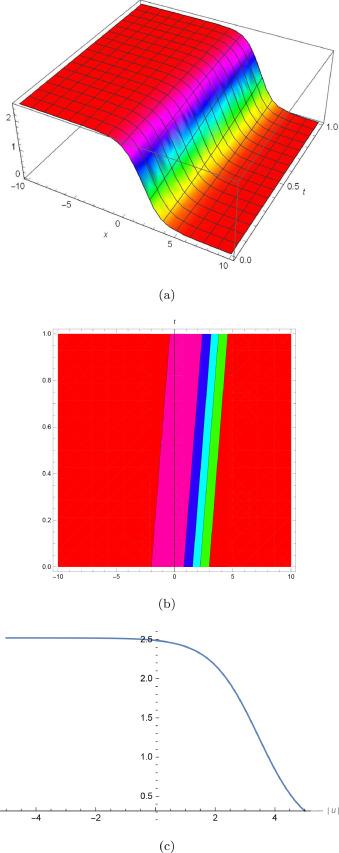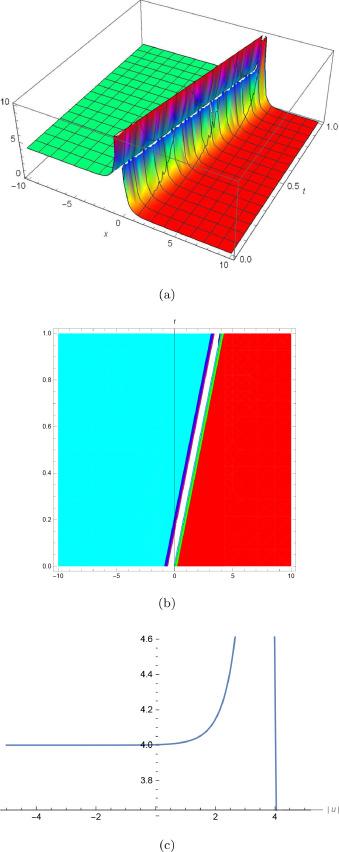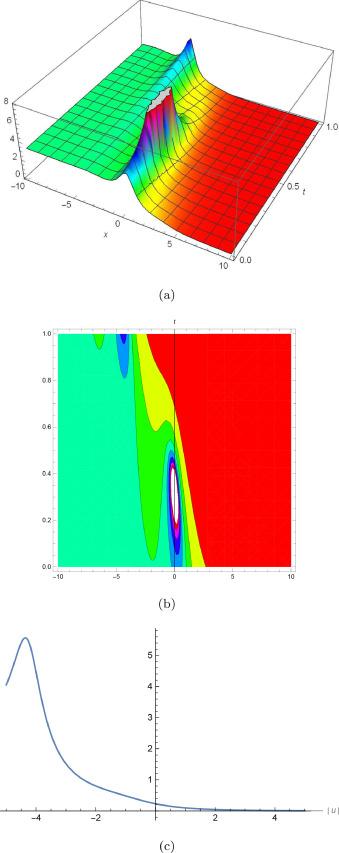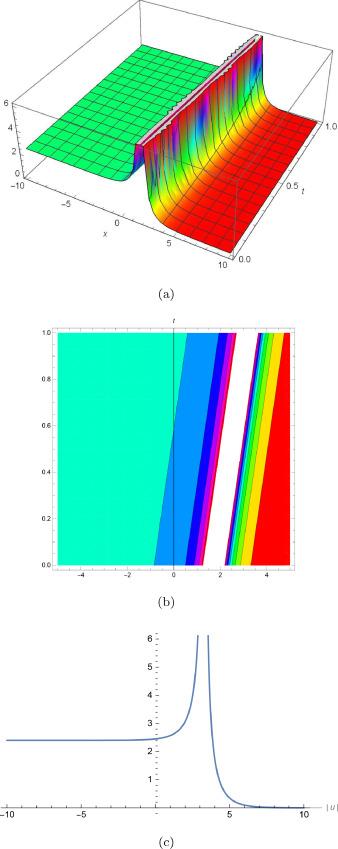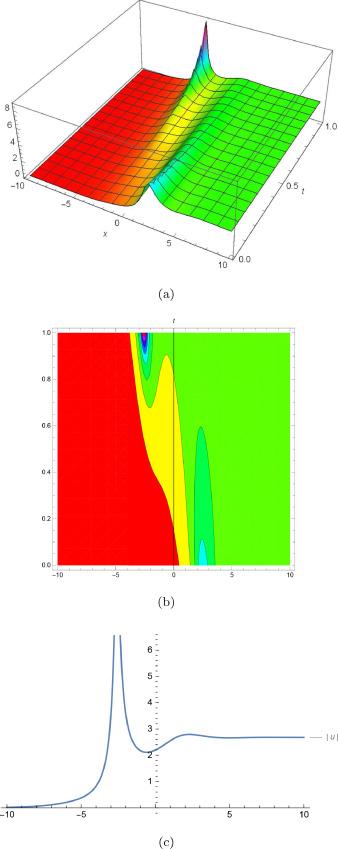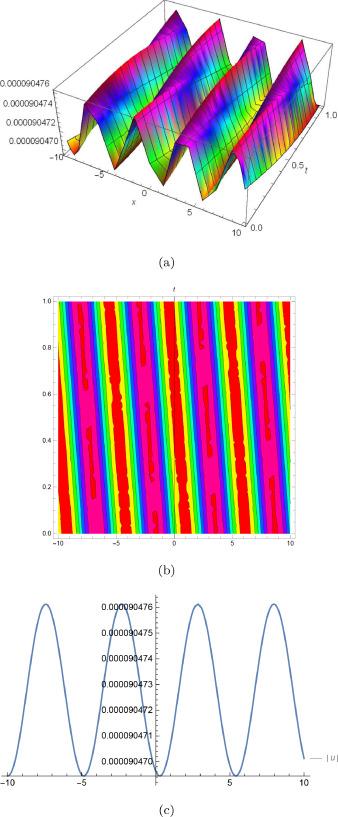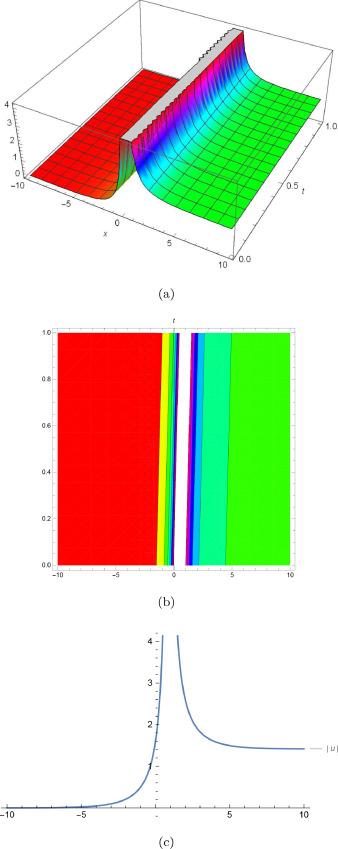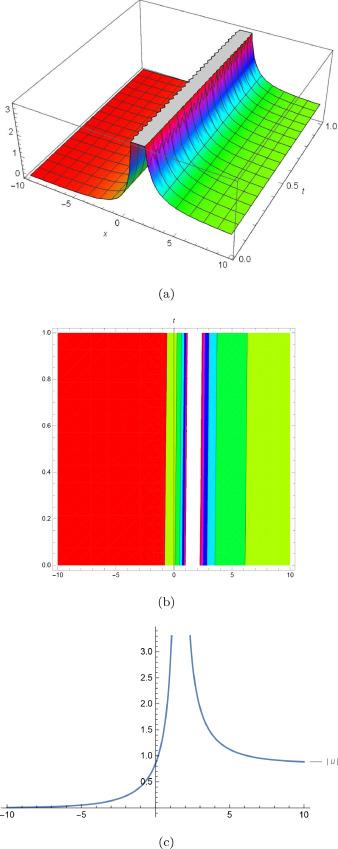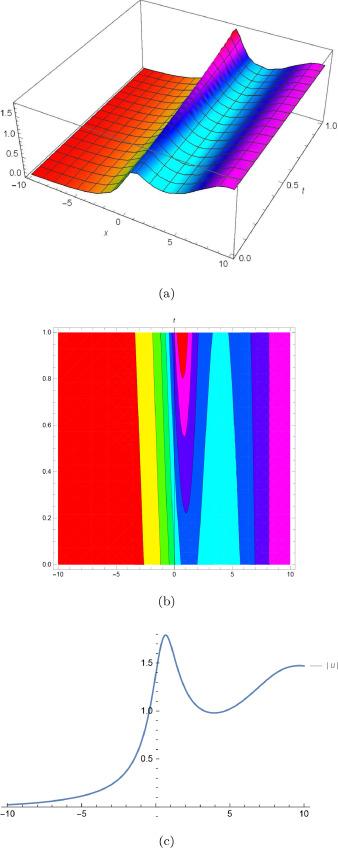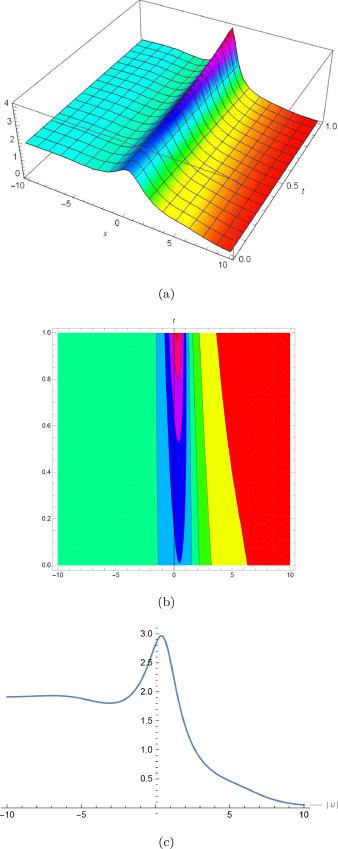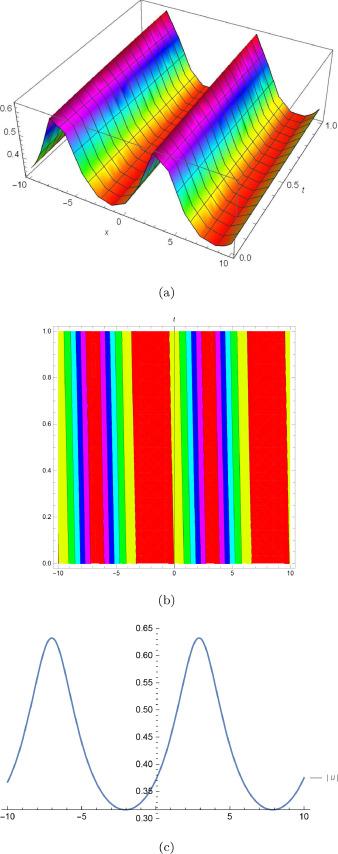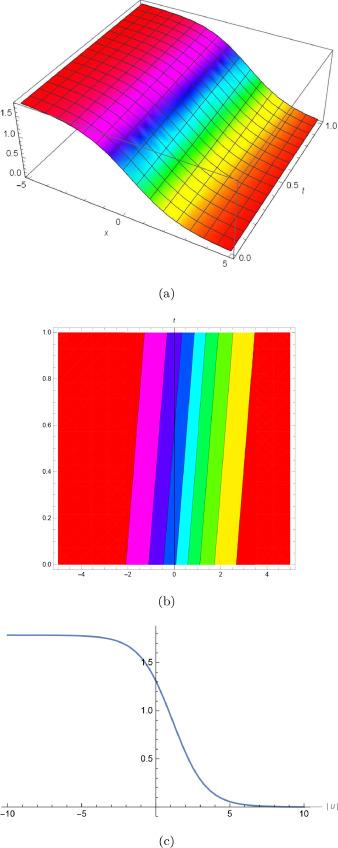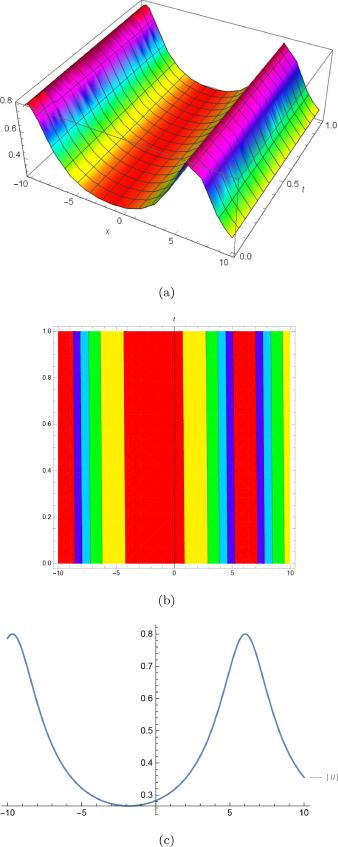1. Introduction
which describes the motion of antiphase boundaries in crystalline solids and has been widely used in various complicated travelling interface problems in materials science and fluid dynamics through a phase-field approach [43].
2. Methodology
2.1. The Bernoulli sub-ode method
where is the unknown function and is a polynomial.
the solution of the Eq. (2) is of the form
where , are the constants to computed and is calculated by homogenous balance principle by comparing the highest order derivative and the highest degree of nonlinear term and provides the following second order ODE
where and are constants and
The required derivatives of Eq. (4) are determined and putting in Eq. (3) and collecting the coefficients of by setting of coefficients of polynomial to zero, an algebraic equation system is produced. These models are solved by Mathematica 11.0 program and substitute in Eq. (2) the solutions of Eq. (1) are obtained.
2.2. The -expansion method
where is the unknown function and is a polynomial.
the solution of the Eq. (8) is of the form
where , are the constants to computed and is calculated by homogenous balance principle by comparing the highest order derivative and the highest degree of nonlinear term and provides the following second order ODE
where and are constants and
where A is an integral constant. The required derivatives of Eq. (9) are determined and putting in Eq. (8) and collecting the coefficients of by setting of coefficients of polynomial to zero, an algebraic equation system is produced. These models are solved by Mathematica 11.0 program and substitute in Eq. (7) the solutions of Eq. (1) are obtained.
2.3. The modified Kudryashov method
where is the unknown function and is a polynomial.
where varies according to given equation, this will carries the Eq. (12) to the nonlinear ODE of the form
is the polynomial in and the derivatives are ordinary with respect to .
where the constants will be determine and positive integer is calculated by balancing principle.
where , and .
3. Mathematical analysis
where Equation (1) reduces to
3.1. Applications to the Bernouli sub-ode method
satisfies the above equation
putting Eq. (18) along with its first two derivative and collecting coefficient of , we obtained following system:
Family I.
Case II.
Family II.
Case II.
Case III.
Family III.
3.2. Applications of -expansion method
satisfies the above equation
putting Eq. (17) along with its first two derivative and collecting coefficient of , we obtained following system:
Family I.
Family II.
Case II.
Case III.
Family III.
Case II.
3.3. Applications to the modified Kudrayshov method
satisfies the above equation
Putting Eq. (20) along with its first two derivatives and collecting the coefficients of , we obtained the following system:
The following cases arise:
Case II.
Case III.
Family II.
Case II.
Family III.
4. Discussion and results
Fig.1 (a) is 3D plot, (b) is contour plot and (c) is 2D plot for solution of for the values of and . |
Fig.2 (a) is 3D plot, (b) is contour plot and (c) is 2D plot for solution of for the values of and . |
Fig.3 (a) is 3D plot, (b) is contour plot and (c) is 2D plot for solution of for the values of and . |
Fig.4 (a) is 3D plot, (b) is contour plot and (c) is 2D plot for solution of for the values of and . |
Fig.5 (a) is 3D plot, (b) is contour plot and (c) is 2D plot for solution of for the values of and . |
Fig.6 (a) is 3D plot, (b) is contour plot and (c) is 2D plot for solution of for the values of and . |
Fig.7 (a) is 3D plot, (b) is contour plot and (c) is 2D plot for solution of for the values of and . |
Fig.8 (a) is 3D plot, (b) is contour plot and (c) is 2D plot for solution of for the values of and . |
Fig.9 (a) is 3D plot, (b) is contour plot and (c) is 2D plot for solution of for the values of and . |
Fig.10 (a) is 3D plot, (b) is contour plot and (c) is 2D plot for solution of for the values of and . |
Fig.11 (a) is 3D plot, (b) is contour plot and (c) is 2D plot for solution of for the values of and . |
Fig.12 (a) is 3D plot, (b) is contour plot and (c) is 2D plot for solution of for the values of and . |
Fig.13 (a) is 3D plot, (b) is contour plot and (c) is 2D plot for solution of for the values of and . |
Fig.14 (a) is 3D plot, (b) is contour plot and (c) is 2D plot for solution of for the values of and . |
Fig.15 (a) is 3D plot, (b) is contour plot and (c) is 2D plot for solution of for the values of and . |
Fig.16 (a) is 3D plot, (b) is contour plot and (c) is 2D plot for solution of for the values of and . |
Fig.17 (a) is 3D plot, (b) is contour plot and (c) is 2D plot for solution of for the values of and . |
Fig.18 (a) is 3D plot, (b) is contour plot and (c) is 2D plot for solution of for the values of and . |





